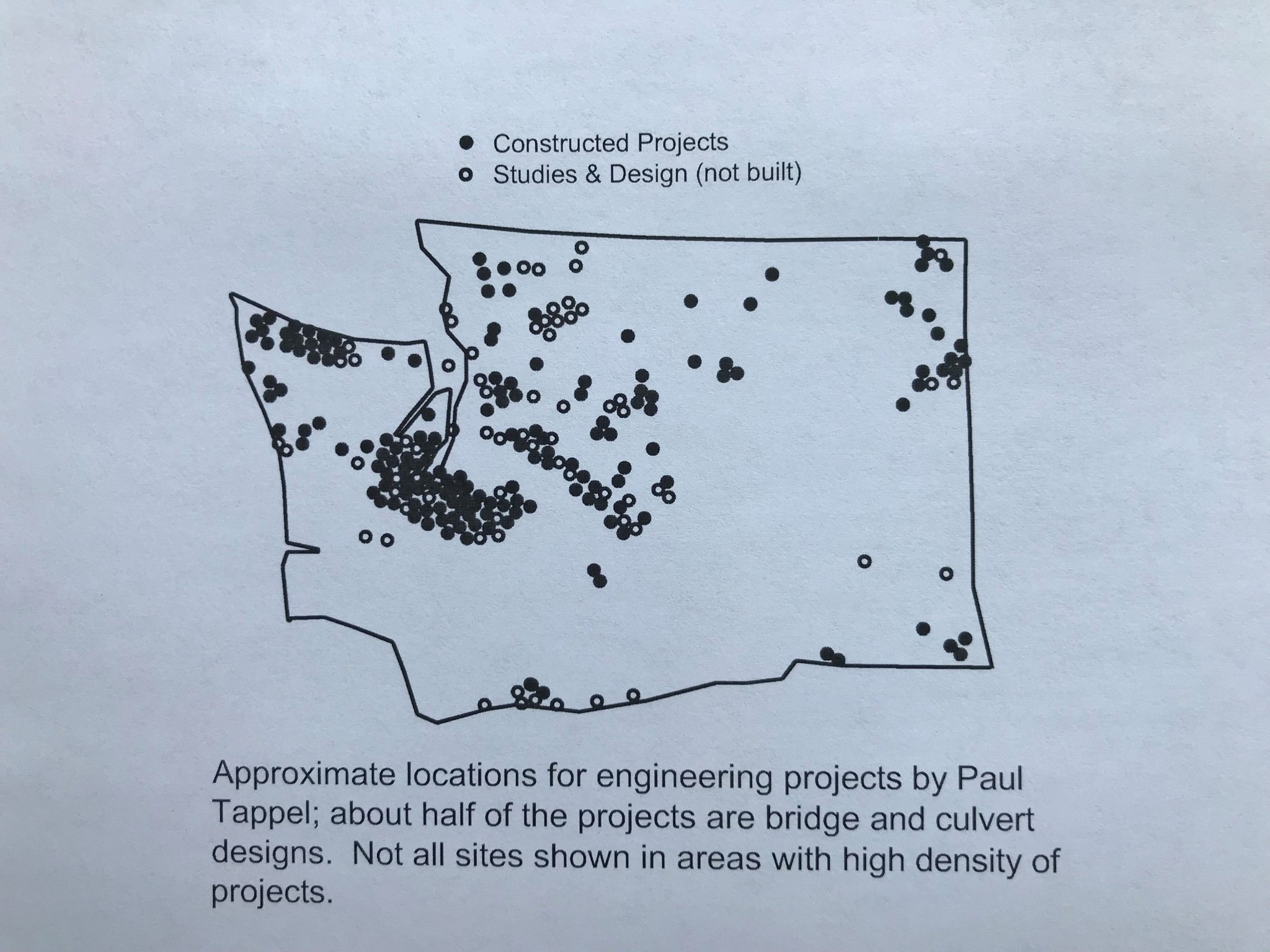Paul Tappel (Civil Engineer & Fisheries Biologist) has designed about 90 large culverts (6’ to 30’-span) and 85 small bridges (20’ to 70’-span) over the last 35 years state-wide in Washington. Most of these projects have been constructed and all have performed very well for the general public, vehicle passage over streams and rivers, emergency vehicle access (EVA), flood flow conveyance, fish passage, and all other functions expected of durable bridges and culverts. Most design and engineering of these projects have been accomplished for private owners, with lesser numbers done for tribes, municipal and county governments.
The most common requirement for bridge and culvert designs is for access to private land and/or residences over streams and rivers. These driveway bridges and driveway culverts are routinely designed, cost-effective and durable structures meeting all county code and state regulatory requirements. County codes (varies by county) generally list a 16’-wide deck width for driveway bridges to one residence, vehicle live load HS-20 or HL-93 to safely support any legal load vehicle (e.g. concrete redi-mix truck), and signs to verify driveway bridge load rating. State regulations for driveway bridges and driveway culverts require adequate span and size for flood flow conveyance (with freeboard), public safety considerations (e.g. guardrails for driveway bridges), fish passage for all native fish, and protection of adjacent stream-side vegetation.
Cost-effective bridge and culvert designs for private landowners (or any entity) are difficult to find. Consulting firms generally assign multiple professionals to include a project manager, civil or structural engineer, land surveyor, AutoCAD staff, aquatic scientist (or fish biologist), with possible additions geotechnical engineer, hydrologist and/or environmental specialist (This approach is termed “Team Design”). Tappel’s interdisciplinary background, multiple technical interests, and accumulated experience allow him to accomplish all elements of bridge and culvert design from initial site reconnaissance through construction management (“Independent Design”). Cost-effective design is realized because one person can accomplish all interdisciplinary tasks required for excellent bridge and culvert design (vs. a team).
After some decades specializing in this work, Tappel has condensed the design process into a straight-forward routine, and with a tried-and-true basis-of-design covering many types of situations. His most common bridge and culvert designs are the following, based on the 170 +/- projects designed and constructed:
Ø Weathering steel bridge superstructure set on pre-cast concrete footings, with large armor rock waterward of the footings and placed lower in elevation than the channel bottom (to prevent footing scour). Basis-of-design elements include 100-year flood flow routing, freeboard under bridge beams, Fire Marshal requirements for EVA, WDFW stream simulation consideration, HL-93 live load (or HS-25), and everything else to meet all requirements for water crossing structures (county code, etc.).
Ø Aluminum or galvanized steel arch culvert (180° half circle assembled with structural plates) or box culvert set on pre-cast concrete strip footings (usually 8”-thick slab sections), with corrugated metal gage intentionally thicker than required for depth of fill. Tappel has also designed galvanized steel and aluminum culverts of various shapes: round, pipe arch, box, horizontal ellipse as well as pre-cast concrete box culverts.
This website includes pictures and short write-ups for typical bridges and culverts that Tappel has designed, that have been built state-wide. A map included with the website shows all his Washington design projects since 1985, with about half of the dots representing bridges and culverts.
Thank you for reviewing this information, and looking through some of the details shown in the website! If anything is of interest to you, please call or e-mail me. I look forward to talking with you!
